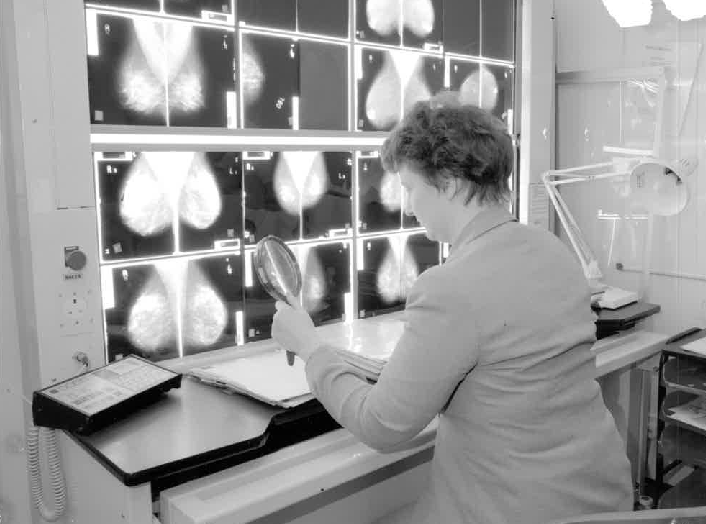
A doctor whose work has helped save the lives of countless women across Bradford is retiring after 35 years’ service to the NHS.
Consultant Radiologist, Anne-Marie Wason, started working for the NHS in 1986 before joining Bradford Teaching Hospitals NHS Foundation Trust in 1996.
She initially worked at the Bradford Royal Infirmary before moving to the Pennine Breast Screening Unit, based at St Luke’s Hospital, where she has spent the past 25 years screening and diagnosing patients with breast cancer.
Dr Wason said:
Early detection of breast cancer is absolutely vital to a woman’s chance of survival and I’ve been proud to have been able to play a part in helping to save countless women’s lives during my time working in Bradford.
I have worked at the Trust for over 25 years as a consultant radiologist with a specialist interest in breast, obstetrics and gynaecology. It’s been a very busy but very rewarding time.
I’ve seen a lot of innovation and development of the services I am involved in – from the introduction of MRI scanners to moving from film to digital images.
We have three times the number of radiologists now, than when I started in radiology, so it is a very exciting speciality to be in and it has developed massively over that time.
Dr Wason has at the forefront of pioneering radiological developments which have speeded up the diagnosis of breast cancer and improved the patient’s journey and experience during their time in the department.
She continued:
Soon after I arrived, I introduced minimally invasive core biopsies that could be carried out in our outpatients department – just with a needle, no general anaesthetic involved and no admission to hospital. That revolutionised breast disease diagnosis because, up to then, patients with a breast lump had to come into hospital, be seen in outpatients by a surgeon, then had surgery booked, a general anaesthetic and an operation where the lump was taken out.
The introduction of core biopsies meant that this process was streamlined for the patient. The patient had a local anaesthetic and a small sample of the lump was removed by the radiologist – if it’s good news the lump doesn’t need taken out so surgery is avoided, but if it is cancerous then the patient is booked in for surgery.
Dr Wason was also instrumental in introducing the ‘one stop breast clinic’ which has now become national standard practice across the country.
She said:
Eighteen months after I started work in breast cancer services, we developed the ‘one stop breast clinic’. Until that point, patients would come to outpatients and meet the surgeon, their history would be taken, their breast examined and then a request for imaging tests meant the patients had to come back to the hospital to see the radiologist after a short interval for another appointment or further appointments.
The one stop breast clinic combined imaging with the outpatients’ appointment – everything is done at the one appointment on the one day – which has really shortened the patient’s journey with us for the better.
We were the first one stop breast clinic in the region and other hospitals used to come and observe how we did things in Bradford and this has now become national standard practice across the NHS.
Other advances in radiology during Dr Wason’s time in Bradford include the introduction of the first CT and MRI scanners at the Trust.
Another big development in my breast work has been the introduction of digital mammography,” she continued, “Which has seen us going from using film images, just like the film we use in our cameras, to digital imaging.
The use of digital images has made diagnosis much quicker, we use a lower radiation dose which is good news for the patient and images can be manipulated more, so there is less need to repeat them as we can see breast tissue in greater details.
Dr Wason says she will miss her patients and colleagues.
As a breast radiologist I have enjoyed meeting patients face-to-face. They are incredibly stoic and grateful and I have always enjoyed my time with them.
I don’t get to see them very much after their initial treatment and surgery, but I do get to see their yearly surveillance mammograms each year when I review them as their radiologist and I get immerse satisfaction to know they are still well.
I’ll be really sad to retire as I feel that colleagues here are my second family, my work family. I will really miss the people I work with and the patients.
Bradford has always been a very friendly trust to work in and here in my department we support each other and I’ve got to work with some really excellent clinicians. It’s just been a real pleasure and very satisfying to work here.
Dr Wason also plans to spend her retirement travelling and already has a couple of holidays lined up.
On the plus side retirement means I will have more time to spend with my husband and my two adult children who live locally. I’ll also get time to walk my two golden retrievers every day and so I am really looking forward to that.
She’s also looking forward to seeing her daughter, who is also a radiologist here in Yorkshire, get married this summer.
